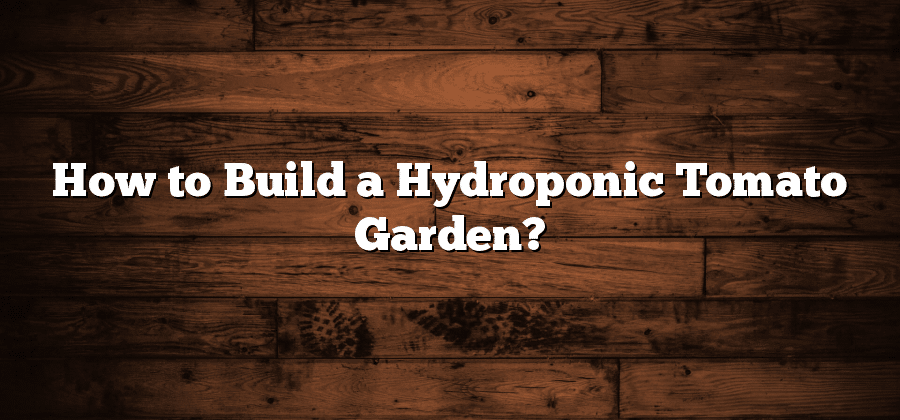Selecting the Right Tomato Varieties
Tomatoes are one of the most popular vegetables to grow in a hydroponic system. When selecting the right tomato varieties for your hydroponic garden, there are a few important factors to consider. Firstly, determine whether you want to grow indeterminate or determinate tomato plants. Indeterminate varieties continue to grow and produce fruit indefinitely, while determinate varieties grow to a certain height and produce all their fruit at once.
Another crucial factor to consider is the climate in which you plan to grow your tomatoes. Some varieties are better suited for hot and humid climates, while others thrive in cooler conditions. It’s important to choose varieties that are compatible with your specific growing environment to ensure successful fruit development. Additionally, consider the size and shape of the tomatoes you prefer. Varieties range from small cherry tomatoes to large beefsteak tomatoes, each offering unique flavors and uses in culinary dishes. By carefully considering these factors, you can select the right tomato varieties that meet your specific needs and preferences for your hydroponic garden.
Understanding the Basics of Hydroponics
Hydroponics is a modern cultivation method that has gained immense popularity in recent years. Unlike traditional soil-based farming, hydroponic systems rely on water and nutrient solutions to grow plants. This innovative technique offers several advantages, such as higher yields, faster growth rates, and the ability to grow crops in limited space.
One of the key principles of hydroponics is the elimination of soil. Instead, plants are grown in nutrient-rich liquid solutions, allowing them to directly absorb the necessary minerals for their growth. This not only maximizes the efficiency of nutrient uptake but also reduces the risk of disease and pests that commonly affect soil-grown plants. Additionally, hydroponics enables precise control over environmental factors like pH levels, temperature, and light, providing optimal conditions for plant growth. It’s no wonder that hydroponics has become a go-to method for commercial growers and hobbyists alike, seeking to achieve consistent and high-quality yields.
Designing and Setting Up the Hydroponic System
When it comes to designing and setting up a hydroponic system, careful planning and consideration are essential for success. The first step is to determine the size and scale of your system. Consider factors such as available space, budget, and desired yield. Assessing these elements will help you decide on the appropriate system design, whether it be a vertical tower system or a traditional horizontal setup.
Next, selecting the right materials and equipment is crucial. Quality is key, as durability and functionality are vital for a thriving hydroponic system. Ensure that you choose materials that are resistant to water damage and can withstand the weight of the plants. Additionally, invest in reliable equipment, such as pumps and timers, to automate and streamline the system’s operations.
Once you have the design and necessary equipment in place, it’s time to assemble and set up your hydroponic system. Start by preparing the containers or troughs that will hold the plants and their growing medium. Ensure they are clean and free of any debris that could contaminate the nutrient solution. Assemble the system according to your chosen design, making sure to position the grow lights at the appropriate height and angle for optimal plant growth.
Successfully designing and setting up a hydroponic system requires careful planning, selecting quality materials, and skillfully assembling the components. By following these steps, you are on your way to creating an efficient and productive hydroponic system.
Choosing the Ideal Growing Medium
When it comes to hydroponic tomato cultivation, selecting the right growing medium is of utmost importance. The growing medium serves as a substitute for soil and plays a vital role in supporting the root system, facilitating nutrient absorption, and promoting overall plant health. There are various options available for hydroponic growing mediums, each with its own unique characteristics and benefits.
One commonly used medium for hydroponic tomato production is Perlite. Perlite is a lightweight, porous material that retains some moisture while allowing for adequate drainage. Its air-filled spaces provide oxygen to the roots, promoting healthy growth and preventing root rot. Another popular choice is coconut coir, which is made from the fibers found in coconut husks. Coconut coir has excellent water retention capabilities while still allowing for good drainage. It is also a sustainable and renewable option for growers.
Providing the Correct Nutrient Solution
Tomatoes are notorious for being heavy feeders, meaning they require a substantial amount of nutrients to grow and thrive. Providing the correct nutrient solution is essential in ensuring healthy, productive tomato plants in a hydroponic system. Nutrient solutions contain a carefully balanced combination of essential elements, including nitrogen, potassium, phosphorus, calcium, magnesium, and numerous trace minerals. The correct proportions and availability of these nutrients are vital for the successful growth of tomato plants.
When selecting a nutrient solution for your hydroponic tomato system, it is crucial to consider both the stage of growth and the specific needs of the tomato variety you are cultivating. Young seedlings and established plants have differing nutritional requirements, and certain tomato varieties may have unique preferences for specific nutrients. Determining these factors will help you tailor your nutrient solution accordingly, providing your tomatoes with the crucial elements they need to develop strong roots, lush foliage, and bountiful fruits.






